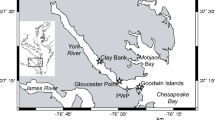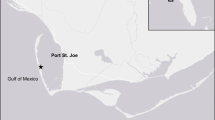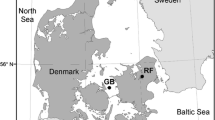Bacterial conversion of high (HMW > 3,000 Da) and low (LMW <3,000 Da) molecular weight DON (dissolved organic nitrogen) was studied along the freshwater section of the Elbe estuary during the summer of 1997. Indigenous populations of picoplankton were incubated in a flow-through chamber that allowed a constant exchange of sterile, filtered Elbe water as the culture medium for the microorganisms, which remained within the chamber. Nitrogen conversion was followed by changes in the concentrations of total and low molecular weight DON and dissolved inorganic nitrogen compounds, the uptake of O2, and bacterial growth. Along the Elbe estuary, total DON concentrations varied between 0.69 and 1.1 mg N L-1, of which between 64 and 79% was LMW-DON. Ammonium was a minor nutrient present in the Elbe at concentrations below 0.26 mg N L-1. During incubation in the laboratory between 27 and 64% of the LMW-DON was consumed at rates ranging from 24 to 51 µg N L-1 h-1. HMW-DON was used only when the degradable LMW-DON pool became exhausted and accounted for between 60 and 100% of the HMW-DON. This produced an increase in the DON consumption rate between 43 and 79 µg N L-1 h-1. Nitrification rates were independent of the external ammonium concentration until it decreased to below 1 µg N-NH4 L-1. Most of the N in the nitrification process originated as NH4 regenerated from DON. Between 75 and 100% of the LMW-DON and ammonium consumed was rapidly converted to nitrate. This amount decreased to between 65 and 85% when HMW-DON was consumed in addition to the LMW-DON. DON and ammonium consumption supported nitrification rates up to 71 µg N L-1 h-1. The amount of DOC (dissolved organic carbon) degraded was not equivalent to the C:N ratio of the total dissolved organic matter. Calculations based on oxygen consumption for respiration and ammonium regeneration revealed that the substrates used during the incubations contained C:N at ratios of about 3:1. These results suggest that the nitrogen-rich compounds had been removed from the dissolved organic matter and subsequently consumed by bacteria, while the carbon skeleton remained mostly unaffected by the degradation processes.
Similar content being viewed by others
Author information
Authors and Affiliations
Rights and permissions
About this article
Cite this article
Kerner, M., Spitzy, A. Nitrate Regeneration Coupled to Degradation of Different Size Fractions of DON by the Picoplankton in the Elbe Estuary. Microb Ecol 41, 69–81 (2001). https://doi.org/10.1007/s002480000031
Received:
Issue Date:
DOI: https://doi.org/10.1007/s002480000031




